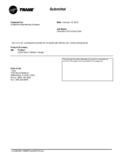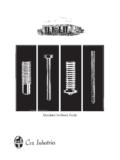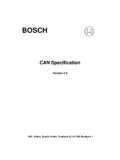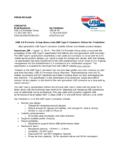Transcription of The Unicode Standard, Version 6
1 The Unicode StandardVersion Core SpecificationTo learn about the latest Version of the Unicode Standard, see of the designations used by manufacturers and sellers to distinguish their products are claimedas trademarks. Where those designations appear in this book, and the publisher was aware of a trade-mark claim, the designations have been printed with initial capital letters or in all and the Unicode Logo are registered trademarks of Unicode , Inc., in the United States andother authors and publisher have taken care in the preparation of this specification, but make noexpressed or implied warranty of any kind and assume no responsibility for errors or omissions. Noliability is assumed for incidental or consequential damages in connection with or arising out of theuse of the information or programs contained Unicode Character Database and other files are provided as-is by Unicode , Inc.
2 No claims aremade as to fitness for any particular purpose. No warranties of any kind are expressed or implied. Therecipient agrees to determine applicability of information 1991 2011 Unicode , rights reserved. This publication is protected by copyright, and permission must be obtained fromthe publisher prior to any prohibited reproduction. For information regarding permissions, inquireat For information about the Unicode terms of use, pleasesee Unicode Standard / the Unicode Consortium ; edited by Julie D. Allen .. [et al.]. Version Includes bibliographical references and index. ISBN 978-1-936213-01-6 ( ) 1. Unicode (Computer character set) I. Allen, Julie D. II. Unicode Consortium. 2011 ISBN 978-1-936213-01-6 Published in Mountain View, CAFebruary 2011 The Unicode Standard, Version 1991 2011 Unicode , 3 Conformance3 This chapter defines conformance to the Unicode Standard in terms of the principles andencoding architecture it embodies.
3 The first section defines the format for referencing theUnicode Standard and Unicode properties. The second section consists of the conformanceclauses, followed by sections that define more precisely the technical terms used in thoseclauses. The remaining sections contain the formal algorithms that are part of confor-mance and referenced by the conformance clause. Additional definitions and algorithmsthat are part of this standard can be found in the Unicode Standard Annexes listed at theend of Section , Conformance this chapter, conformance clauses are identified with the letter C. Definitions are identi-fied with the letter D. Bulleted items are explanatory comments regarding definitions small number of clauses and definitions have been updated from their wording in Ver-sion of the Unicode Standard.
4 A detailed listing of these changes, as well as a listing ofany new definitions added since Version , is available in Section , Clause and Defini-tion information on implementing best practices, see Chapter 5, Implementation Versions of the Unicode StandardFor most character encodings, the character repertoire is fixed (and often small). Once therepertoire is decided upon, it is never changed. Addition of a new abstract character to agiven repertoire creates a new repertoire, which will be treated either as an update of theexisting character encoding or as a completely new character the Unicode Standard, by contrast, the repertoire is inherently open. Because Unicodeis a universal encoding, any abstract character that could ever be encoded is a potential can-didate to be encoded, regardless of whether the character is currently new Version of the Unicode Standard supersedes the previous one, but implementa-tions and, more significantly, data are not updated instantly.
5 In general, major andminor Version changes include new characters, which do not create particular problemswith old data. The Unicode Technical Committee will neither remove nor move may be deprecated, but this does not remove them from the standard or fromexisting data. The code point for a deprecated character will never be reassigned to a differ-ent character, but the use of a deprecated character is strongly discouraged. Generally theserules make the encoded characters of a new Version backward-compatible with should be prepared to be forward-compatible with respect to Unicodeversions. That is, they should accept text that may be expressed in future versions of thisstandard, recognizing that new characters may be assigned in those versions.
6 Thus theyshould handle incoming unassigned code points as they do unsupported characters. (SeeSection , Unknown and Missing Characters.)56 ConformanceCopyright 1991 2011 Unicode , Unicode Standard, Version Version change may also involve changes to the properties of existing characters. Whenthis situation occurs, modifications are made to the Unicode Character Database and a newupdate Version is issued for the standard. Changes to the data files may alter programbehavior that depends on them. However, such changes to properties and to data files arenever made lightly. They are made only after careful deliberation by the Unicode TechnicalCommittee has determined that there is an error, inconsistency, or other serious problemin the property Version of the Unicode Standard, once published, is absolutely stable and will neverchange.
7 Implementations or specifications that refer to a specific Version of the UnicodeStandard can rely upon this stability. When implementations or specifications areupgraded to a future Version of the Unicode Standard, then changes to them may be neces-sary. Note that even errata and corrigenda do not formally change the text of a publishedversion; see Errata and Corrigenda later in this features of the Unicode Standard are guaranteed to be stable across versions. Theseinclude the names and code positions of characters, their decompositions, and severalother character properties for which stability is important to implementations. See also Stability of Properties in Section , Properties. The formal statement of such stabilityguarantees is contained in the policies on character encoding stability found on the Uni-code Web site.
8 See the subsection Policies in Section , Other Unicode Online the discussion of backward compatibility in section of Unicode Standard Annex#31, Unicode Identifier and Pattern Syntax, and the subsection Interacting with Down-level Systems in Section , Unknown and Missing NumberingVersion numbers for the Unicode Standard consist of three fields, denoting the major ver-sion, the minor Version , and the update Version , respectively. For example, Unicode indicates major Version 5 of the Unicode Standard, minor Version 2 of Unicode 5, andupdate Version 0 of minor Version Unicode information on the current and past versions of the Unicode Standard can befound on the Unicode Web site. See the subsection Versions in Section , Other UnicodeOnline Resources.
9 The online document contains the precise list of contributing files fromthe Unicode Character Database and the Unicode Standard Annexes, which are formallypart of each Version of the Unicode and Minor Versions. Major and minor versions have significant additions to thestandard, including, but not limited to, additions to the repertoire of encoded are published as an updated core specification, together with associated updates toUnicode Standard Annexes and the Unicode Character Database. Such versions consolidateall errata and corrigenda and supersede any prior documentation for major, minor, orupdate major Version typically is of more importance to implementations; however, even updateversions may be important to particular companies or other organizations.
10 Major andminor versions are often synchronization points with related standards , such as with ISO/IEC to Version , minor versions of the standard were published as online amendmentsexpressed as textual changes to the previous Version , rather than as fully consolidated neweditions of the core of the Unicode Standard57 The Unicode Standard, Version 1991 2011 Unicode , Version . An update Version represents relatively small changes to the standard, typ-ically updates to the data files of the Unicode Character Database. An update Version neverinvolves any additions to the character repertoire. These versions are published as modifi-cations to the data files, and, on occasion, include documentation of small updates forselected errata or , each new Version of the Unicode Standard supersedes all earlier versions.
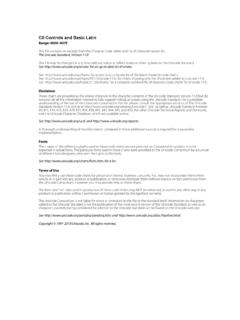
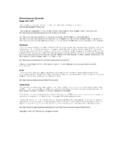


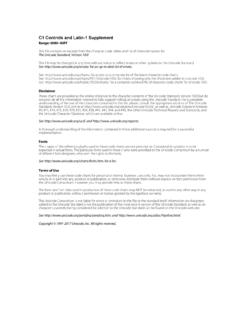
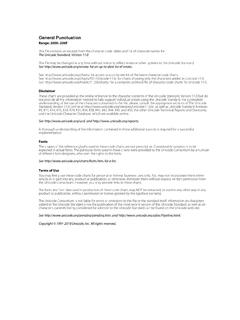





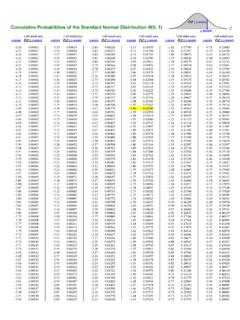
![14-Lead Standard Small Outline Package [SOIC N] …](/cache/preview/f/a/1/1/8/8/6/c/thumb-fa11886c677187741ad4feccea0cdd28.jpg)

